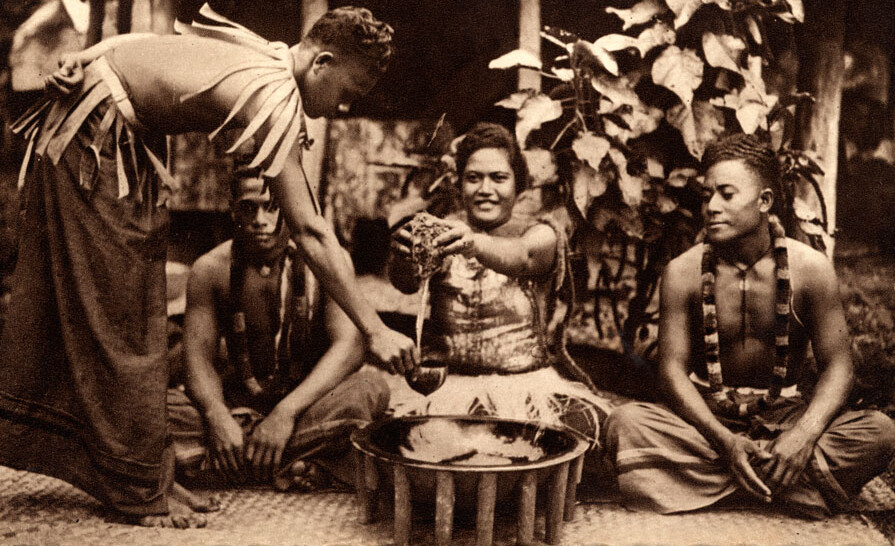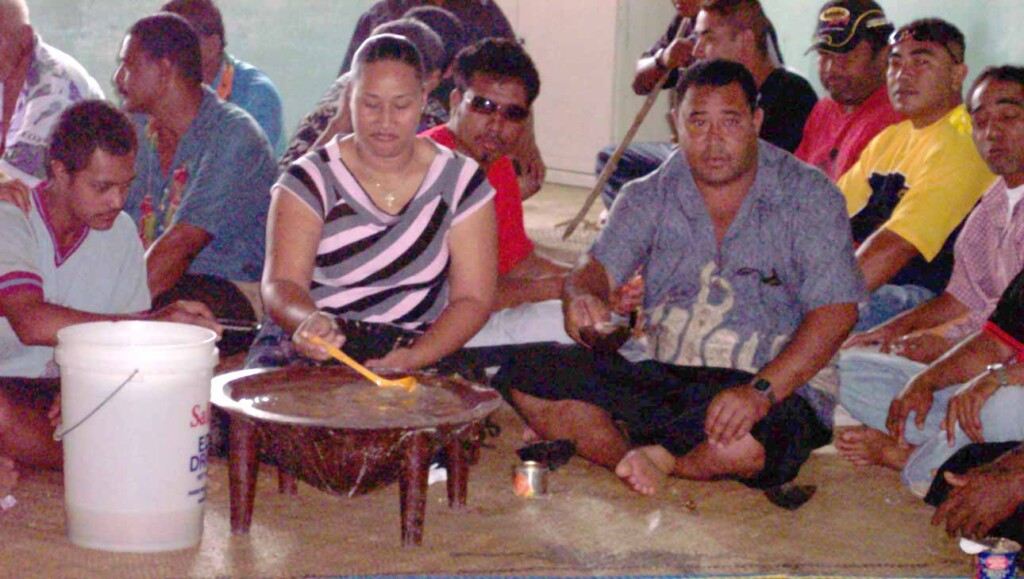
In New Zealand, Pacific Island scientists have just been given a large grant to run a study trial on the use of the traditional kava preparation and kava ceremony for treating PTSD.
Believing it could help treat PTSD and other trauma in soldiers and veterans, police officers, and corrections facility staff, the two scientists want to revise the reputation of kava, which was damaged by a pharmaceutical rush into the product some years ago.
Dr. Apo Aporosa of Fijian descent on his mother’s side, and Dr. Sione Vaka from Tonga, have received $1 million from the Health Research Council to combine kava drink with the traditional ceremony of conversation.
“I’m so stoked that Health Research Council has faith in us as a team to do this critically important work,” Dr. Aporosa told the NZ Herald. “It’s likely we’re going to spend a million dollars to prove what traditional Pacific knowledge has been trying to tell Europeans for the last 200 years.”
Kava comes in many traditional names, all relating to the root of the Piper methysticum plant. Across the islands of the Pacific, the root was stirred in water and drank for its subtle euphoric, but also sedative properties. Accompanying the drink was a Talanoa or what Dr. Aporosa is referring to as “talk therapy,” but what was essentially a heart-to-heart conversation.
Their study will take two groups of people and give them both the whole kava drink plus the talanoa, referred to as “the full package” while another group will receive just the talanoa, and another group just the kavalactones—the active ingredient in the plant.
In 2009, the Cochrane Institute confirmed that kava was probably more effective than placebo for treating anxiety. At the time, pharmaceutical and supplement companies had quickly isolated kavalactones and sold them as a natural relaxant.
The irony is that in this extracted form, it was mildly toxic to the liver, whereas when consumed traditionally in the ‘Ava Ceremony’ (to use the Samoan language) or the Faikava, in Fijian, that toxicity is not present.

Like most indigenous populations, New Zealand’s Māori population suffers from higher rates of stress, trauma, and anxiety than the national average, and the Health Research Council believes that the Kava ceremony is the most sensible way to fulfill this unmet need.
MORE PLANT MEDICINES: Trying to Stop the Epidemic of Veteran Suicides, Plant Medicine Company Builds Mental Wellness Value Chain
“We do know that… talk therapy works for some PTSD cases,” Dr. Aporosa said, adding that talanoa is basically talk therapy, done while sitting on the floor rather than in chairs.
“We know that kava has relaxant properties, that kava is a natural anti-anxiety medication, so we combine those two elements in a culturally influenced space, and we’ve got something here that’s unique.”
Aporosa understands the situation better than most. Not only is he from Pacific stock, but he was a police officer who had to leave the force due to PTSD from the line of duty.
MORE INDIGENOUS NEWS: Brazil’s President Makes Good on Campaign Promise to Evict Miners from Indigenous Reserves in the Amazon
His experience traveling the world speaking with former military and police got him the Fulbright Scholarship to study the kava ceremony in Hawai’i, another island culture that uses the plant.
His hope is to show that it works significantly in the trial, and then release a free e-book about how to perform the ceremony and intervention, in order to ensure the largest number of people can access the knowledge of this traditional Pacific medicine.
SHARE This Return To Our Literal Roots With Your Friends On Social Media…



















